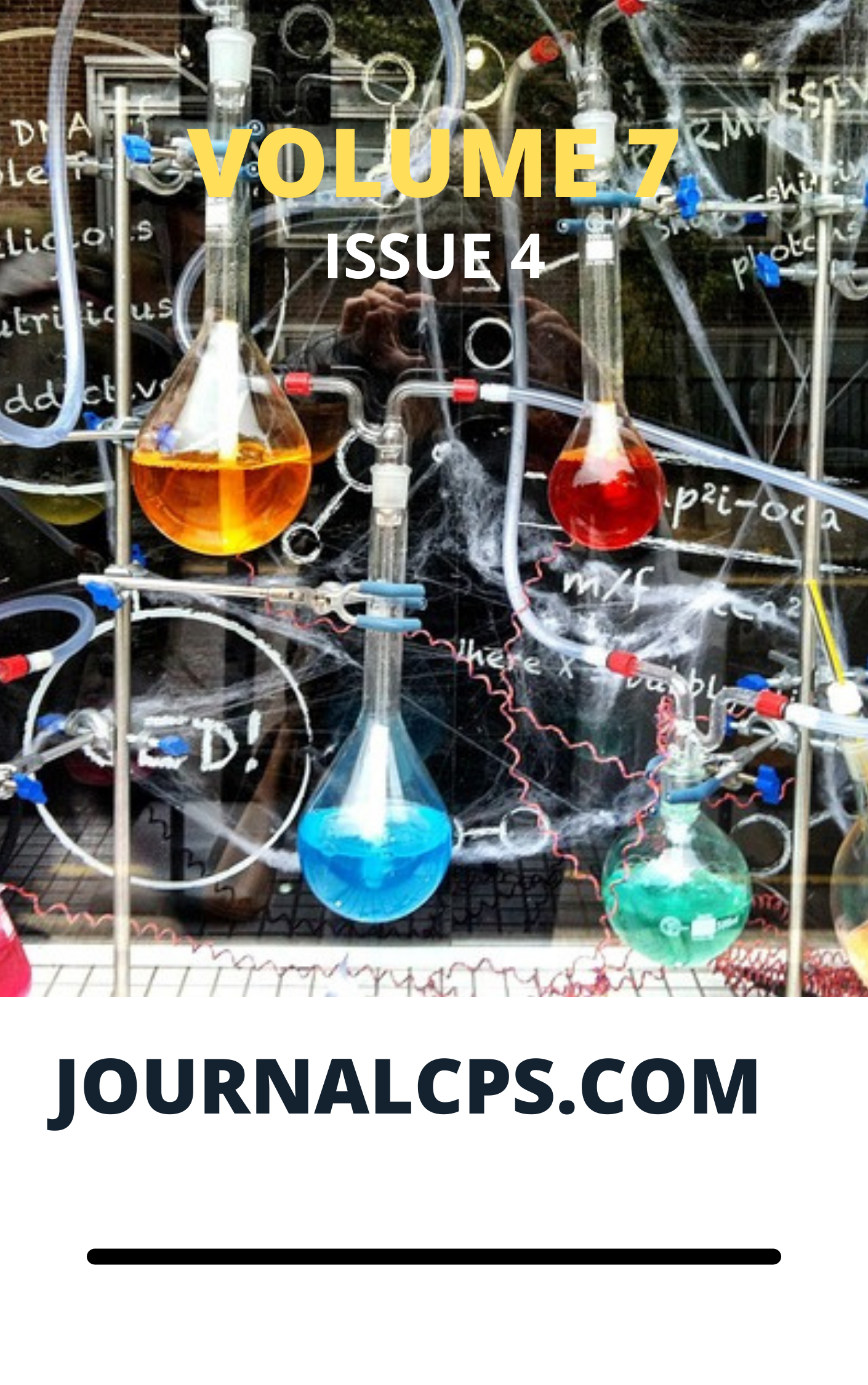Green Synthesis, Characterization and Antibacterial Activity of Zinc Oxide and Titanium Dioxide Nanoparticles Using Terminalia Catappa and Cymbopogon Citratus Leaf Extract
Keywords:
Nano-particles, inhibition, synthesis and pathogensAbstract
Femi Emmanuel Awe, M. D. Faruruwa and H. Abba
This study synthesized zinc oxide and titanium oxide nanoparticles using green syntheses method mediated by Terminalia
catappa and Cymbopogon citratus leaves extracts. Zinc nitrate hexahydrate Zn (NO3)2.6H20 and TiO (OH)4 were the precursors for the ZnO NPs and TiO (OH)4 synthesis respectively. Results obtained revealed maximum wavelength of absorption for the ZnO-NP (330 nm) and TiO4 (410 nm). Useful functional groups (that are typical for the presence of compounds known for their
reducing properties) were found in the extracts) Synthesized nanoparticles were characterized using UV-visible spectrometer,
FTIR, SEM and XRD. XRD pattern matching that of Joint Committee on Powder Diffraction Standards (JCPDS) card for ZnO confirmed the presence of hexagonal ZnO NPs with an average size of 76 nm while the results revealed the anatase and rutile form of TiO2 with an average crystalline size of 79 nm Antimicrobial activities of the synthesized nanoparticles were established for some selected water-borne pathogens (Staphylococcus aureus, Bacillus subtilis, Escherichia coli, Pseudomonas aeruginosa
and Salmonella typhi).
Downloads
Published
Issue
Section
Most read articles by the same author(s)
- Nnabuk Okon Eddy, Rajni Garg, Femi Emmanuel Awe, Habibat Faith Chahul, Computational Chemistry studies of some cyano(3-phenoxyphenyl) methyl isobutyrate derived insecticides and molecular design of novel ones , Communication In Physical Sciences: Vol. 5 No. 4 (2020): VOLUME 5 ISSUE 4
- Patricia Ese Umoru, Femi Emmanuel Awe, Joseph Ifeanyi Uche, Oluwayemi Abiodun Babatunde, Ibrahim Aliyu Salaha, Investigation of the Adsorptive And Inhibitive Properties Of Cucurbita Maxima Peel Extract And Halide Ions As Inhibitors For Stainless Steel in 1m H2so4 Solution , Communication In Physical Sciences: Vol. 10 No. 2 (2023): VOLUME 10 ISSUE 2
Similar Articles
- Yakubu Azeh, Monday Musah, John Tsado Mathew, Ameh Ohiga Alfa Ebune, Fatima Ibrahim, Umar Musa Tanko, Muhammad Umar Badeggi, Aliyu Ahmed Ibrahim, Abdulkarim Mohammed Awwal, Aishetu Ibrahim Muhammad, Karima Tani Muhammad, Ismail Haruna, Nasiru Ibrahim, Preparation of Conductive Antibacterial Film of Organoclay Origin , Communication In Physical Sciences: Vol. 12 No. 1 (2024): VOLUME 12 ISSUE 1
- Okoche Kelvin Amadi, Stella Mbanyeaku Ufearoh, Innocent Ajah Okoro, Paulina Adaeze Ibezim, Mitigation of the Corrosion of Mild Steel in Acidic Solutions Using An Aqueous Extract of Calopogonium muconoide (cm) as a green corrosion inhibitor , Communication In Physical Sciences: Vol. 8 No. 3 (2022): VOLUME 8 ISSUE 3
- Babatunde Ogunyemi, ogunyemi Oderinlo, Taye Alawode, Green Synthesis and Characterization of Silver Nanoparticles from Tympanotonus fuscatus and Crassostrea gasar Shells , Communication In Physical Sciences: Vol. 11 No. 4 (2024): VOLUME 11 ISSUE 4
- A. O. Aliyu, F. E. Awe, M. D. Faruruwa, T. E. Abawua, Synthesis of Some Schiff Bases and Investigation of their Corrosion Inhibition Efficiencies for Aluminum in Acidic Media , Communication In Physical Sciences: Vol. 8 No. 1 (2022): VOLUME 8 ISSUE 1
- Mosunmade Aiyejagbara, Kevin Ejiogu, Uche Ibeneme, Tachye N.B Shekarri, A Study On The Effect Of Corn Cob Nano Particles On The Physico-Mechanical Properties Of Waste Expanded Polystyrene , Communication In Physical Sciences: Vol. 12 No. 4 (2025): VOLUME1 2 ISSUE 4
- Izuagbe Gilbert Osigbemhe , Muluh Emmanuel Khan, SYNTHESIS, SPECTROSCOPIC CHARACTERIZATION AND BIO-INVESTIGATION of N-(2-furylmethylidene)-1,3, 4-thiadiazole-2-amine and its Iron (III) COMPLEXES , Communication In Physical Sciences: Vol. 12 No. 4 (2025): VOLUME1 2 ISSUE 4
- Brendan Chidozie Asogwa, George Idongesit Etim, Ifeanyi Edozie Otuokere, Kelvin O. Amadi, Synthesis, Characterization And In-Silico Study Of Mn (Ii) And Zn (Ii) Nano-Sized Complexes Of Metronidazole Synthesized Via Sonication Method , Communication In Physical Sciences: Vol. 12 No. 8 (2025): Volume 12 Issue 8
- Christabel M. Eteghwia, Enoo Ojaikre, Efeturi A. Onoabedje, Chinweike C. Eze, Patience O. Adomi, 7-Chloroquinoline Sulphonamide Derivatives: Synthesis, Characterization, Biological and Drug-likeness Evaluation , Communication In Physical Sciences: Vol. 12 No. 1 (2024): VOLUME 12 ISSUE 1
- M. E. Khan , Synthesis, Spectroscopic Characterization and Biological Studies Of 2-{[(2-hydroxy-5-nitrophenyl)methylidene]amino} nicotinic acid and Iron (II) complexes , Communication In Physical Sciences: Vol. 5 No. 2 (2020): VOLUME 5 ISSUE 2
- Kantoma, Dogara , Nwokem, Calvin Onyedika, Zakka Israila Yashim, Zaharaddeen Nasiru Garba, Green Synthesis of Silver Nanoparticles(AgNPs) using Calotropis procera Leaves Extract and it Adsorption Properties for the Removal of Cr3+ from Petroleum Waste Water , Communication In Physical Sciences: Vol. 10 No. 3 (2023): VOLUME 10 ISSUE 3 (2023-2024)
You may also start an advanced similarity search for this article.




